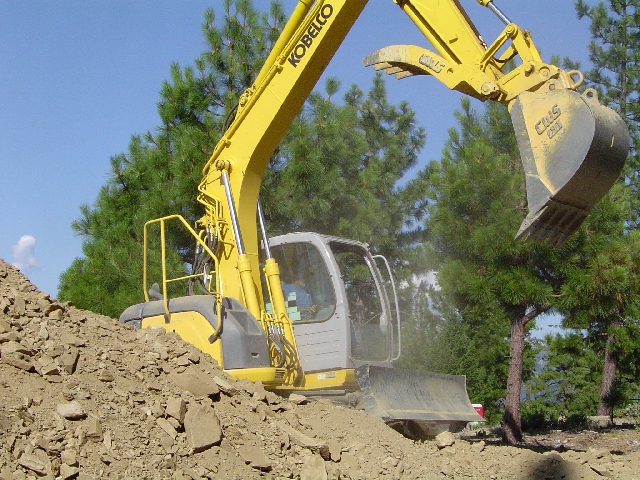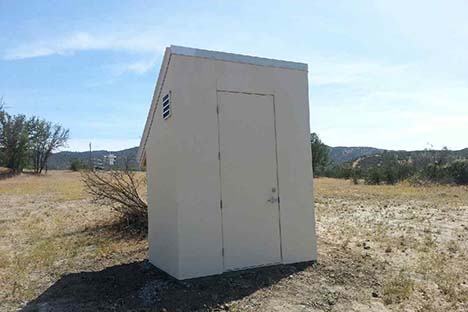Partner and Contributing Seismic Networks
Stations from a number of networks contribute data to improve earthquake information provided by the Northern California Seismic System. The NCEDC archives waveform data from a subset of stations for each of these networks. In addition, complete or partial archives of data from contributing networks that are no longer operating are also available through the NCEDC archive.
Network List
- Southern California Seismic Network (CI)
- California Geological Survey Network (CE)
- University of Reno, Nevada Network (NN)
- UC San Diego ANZA Network (AZ)
- California Division of Water Resources Seismic Network (WR, opens as a separate page)
- PG&E Central Coast Seismic Network operated by Pacific Gas and Electric Company (PG, opens as a separate page)
- Plate Boundary Observatory Strain and Seismic Data (PB, opens as a separate page)
Data access
Several tools provide access to SEED format data at the NCEDC, both in terms of querying the archives and allowing data requests:
- Querying the archives
- Access data through NCEDC web services
Southern California Seismic Network (CI)
In 2004, the NCEDC started to archive broadband and strong motion data from 15 SCSN (network CI) stations that are telemetered to the Northern California Seismic System (NCSS) of the California Integrated Seismic Network (CISN). These data are used in the prototype real-time state-wide earthquake processing system and also provide increased coverage for Northern California events. Since the data are telemetered directly from the stations in real time to both the SCSN and to the NCSS, the NCEDC archives the NCSS's copy of the data to ensure that at least one copy of the data will be preserved. Due to reduced state funding, the SCSN has gradually reduced the number of directly telemetered stations to 4. However, beginning in November 2014, the NCEDC is again archiving a copy of the data from the 11 other original stations, delivered via T-1 line from the data center at SCEC.
In early 2006, the NCEDC started to continuously archive some of the selected SCSN short-period stations that are contributed to the NCSN. All of these data are also available in real time from the NCEDC DART. In 2009, NCSS started incorporating data from ~25 additional SCSN stations near the southern border of the NCSS monitoring area in its event waveform collection to provide better azimuthal coverage of events in that area. In 2009-2010, the NCSS also started retrieving event waveform data from the SCSN for other SCSN stations that are expected to receive signals from Northern California earthquakes. All of these event waveforms are also archived at the NCEDC.
- SCSN station maps and lists (SCEDC webpage)
- CI Information Directory, including list of station locations, list of available channels (yy/mm/dd and yyyy.doy formats), and instrument response (SEED and simplified format).
The SCEDC is the authoritative archive for all CI data.
California Geological Survey Network (CE)
The CSMIP network includes more than 900 accelerograph stations for measuring strong motion in the ground, buildings, dams, and bridges of the state of CA. For modern stations, data is telemetered in real time when shaking starts, while for older stations data is retrieved remotely via computer or physically retrieved from a site. Processed data is available at the U.S. National Center for Engineering Strong Motion Data. Read more information about the CSMIP network
The NCEDC currently archives data for more than 40 California Geological Survey stations. CE network data for a handful of stations goes back to 2006, with the number of archived stations having increased rapidly between 2016 and 2019.
- CE Information Directory, including list of station locations, list of available channels (yy/mm/dd and yyyy.doy formats), and instrument response (SEED and simplified format).
University of Reno, Nevada Network (NN)
The University of Reno in Nevada (UNR) operates several broadband stations in western Nevada and eastern California that are important for Northern California earthquake processing and analysis. Starting in August 2000, the NCEDC has been receiving and archiving continuous broadband data from selected UNR stations. In early 2006, the NCEDC started to archive continuous data from the UNR short-period stations that are contributed to the NCSN. Both the broadband and short-period UNR stations are available in real time through the NCEDC DART. The University of Nevada, Reno, operates a network with broadband, strong motion, and short period sensors located in western Nevada and eastern California. The NCEDC archives waveform data spanning a subset of channels from a portion of these stations.
- Map of Nevada network (UNR website)
- Station list (UNR website)
- NN Information Directory, including list of station locations, list of available channels (yy/mm/dd and yyyy.doy formats), and instrument response (SEED and simplified format).
The IRIS DMC archives all data from the UNR regional seismic network. This includes data from the short-period network as well as the broadband stations.
UC San Diego ANZA Network (AZ)
The ANZA Realtime Broadband Array, run by UC San Diego, is a broadband array crossing the San Jacinto and Rose Canyon fault zones in Southern California. The NCEDC archives waveform data from a small subset of these stations.
- AZ station information and map (ANZA network webpages)
- AZ Information Directory, including list of station locations, list of available channels (yy/mm/dd and yyyy.doy formats), and instrument response (SEED and simplified format).


